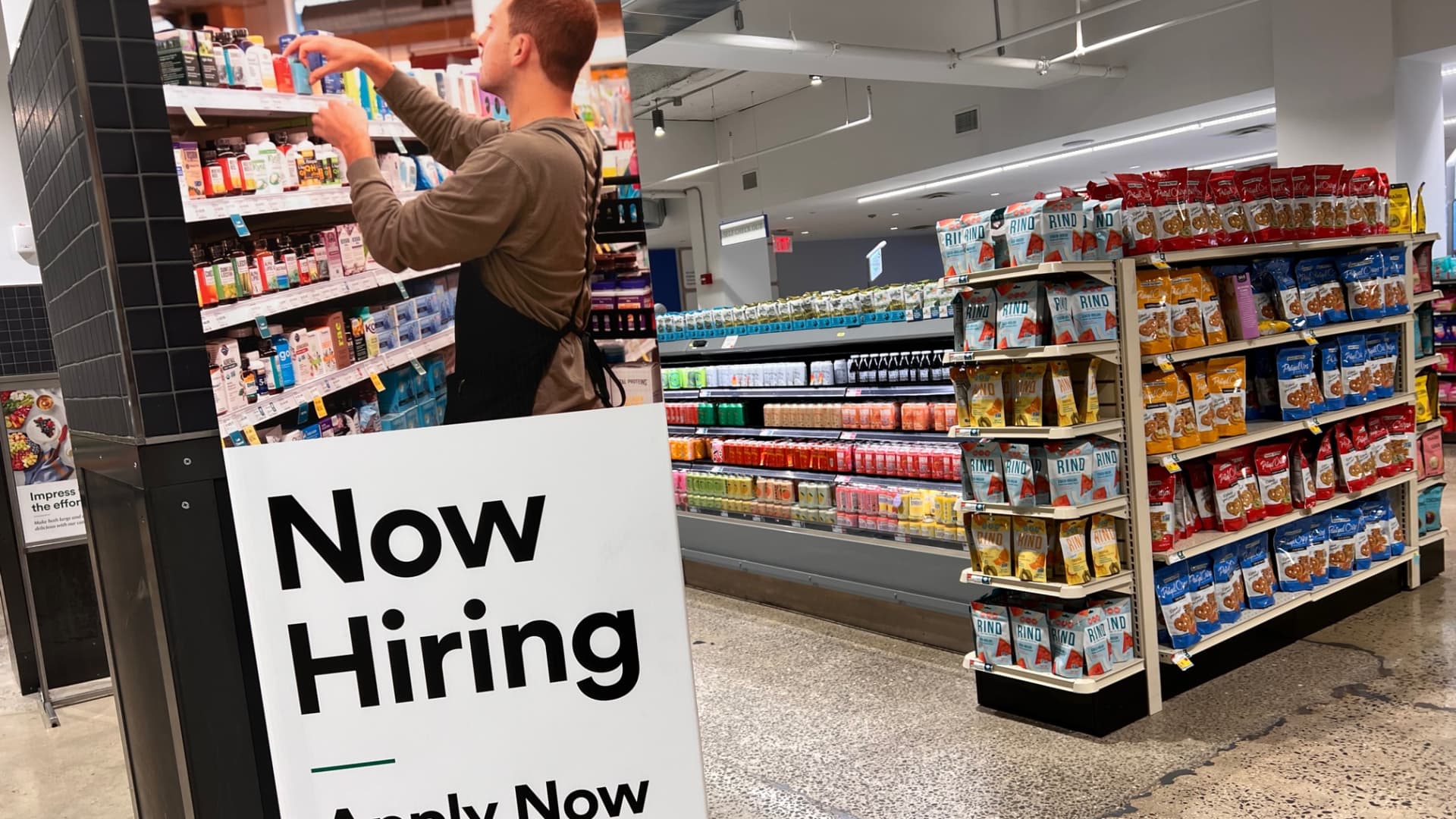Recession-like conditions rolling through the U.S. economy are likely to cause more ripples through an otherwise strong jobs market.
“Rolling recessions” has become a popular term these days for what the U.S. has faced since a slowdown that started in early 2022. The term connotes that while the economy may not meet an official recession definition, there will be sectors that will feel very much like they are in contraction.
That will be true as well for the jobs market, which overall has been strong but has seen weakness in sectors that could intensify this year, according to data from popular networking site LinkedIn.
Economists there, in fact, have identified multiple sectors that will show varying degrees of tightness this year.
“Labor markets remain tighter compared to pre-pandemic levels,” said Rand Ghayad, head of economics and global labor markets at LinkedIn. “They’re still resilient. They’re still stronger than what we’ve seen in the pre-pandemic period, but they’ve been slowing down gradually and will likely continue to slow down over the next few months.”
Various dominoes already have fallen during the rolling-recession period.
Housing entered a sharp downturn last year, and the widely followed manufacturing indexes have been pointing to contraction for several months. In addition, the most recent senior loan officer survey from the Federal Reserve noted significantly tighter credit conditions, indicating a slowdown is hitting the financial sector.
Other sectors could follow as economists broadly expect that the U.S. will see — at best — slow to moderate growth this year.
LinkedIn data, which comes from job postings and other data from the site’s more than 900 million members worldwide, is markedly different from government data in an interesting way.
Whereas the more widely following data from Bureau of Labor Statistics finds an extremely tight labor market, with nearly two open jobs for every available worker, LinkedIn’s “labor market tightness” metric has shown about a 1-to-1 ratio that even looks to be loosening a bit more.
The implications are important.
The Federal Reserve has cited the historic tightness of the labor market as motivation for its series of interest rate hikes aimed at taming inflation. If the market trends are unfolding the way LinkedIn data indicates, it could provide impetus for the central bank to ease up on its own tightening measures.
“Everything depends on what the Fed will be doing over the next couple of months,” Ghayad said.
Where the jobs will be
For job seekers, the phrase “rolling recessions” means that it will be easier to get employment in some industries, while others will be tougher.
LinkedIn identifies certain industries as having slack, meaning that employers are having an easier time filling jobs and don’t need to use as many enticements to find workers. Those industries are government administration, education and consumer services, where applicants outnumber job openings.
Moderately tight markets include, tech, entertainment, information and media, professional services, retail estate, retail and financial services. In these industries, job applicants are having an easier time finding opportunities while employers are having to step up recruitment efforts.
Extremely tight labor markets include accommodation, oil and gas, hospice and health care. LinkedIn says that in those fields “employers cannot fill vacancies fast enough.”
Though hospitality consistently has been the leader in expanding payrolls, the industry is still about 5.5 million below its pre-pandemic level, according to BLS data. That is true even though hotels, restaurants, bars and the like have collectively raised hourly wages by about 23%.
“This industry is actually still looking to hire a lot of people. It’s the tightest industry in the United States,” Ghayad said. “There’s a lot of demand. They’re looking for people. There’s a lot of shortages. They can’t find people so these industries, services, industries, accommodation and anything that has to do with food or entertainment are booming.”
Recession fears loom
From a business standpoint, Ghayad said there have been four industries that have been recession-proof: government, utilities, education and consumer services. He does not expect to see any significant slowdown in hiring there.
Despite the seeming healthiness of the labor market, many economists think a broader recession is still ahead.
A recession survey from The Wall Street Journal sees about a 61% chance of a contraction, and the New York Fed’s recession indicator, which tracks the spread between 10-year and 3-month Treasury yields as an indicator, is pointing toward a 57% chance of a recession in the next year. That’s the highest level since 1982.
Still, Ghayad said he expects hiring to remain strong, even though LinkedIn posts mentioning words such as “layoffs,” “recession” and “open to work” have been on the rise in recent months.
“We don’t expect sort of any potential downturn to significantly impact the labor markets,” he said. “We’re in a very good position right now. There’s some cooling, but … the labor market continues to be the brightest spot in the U.S. economy.”
